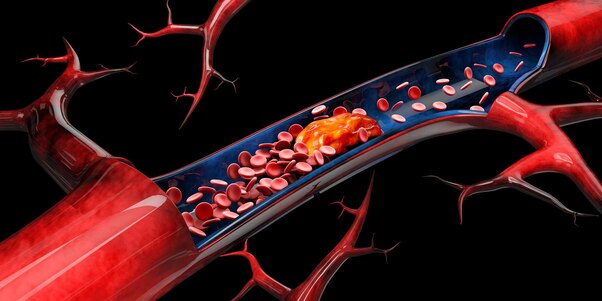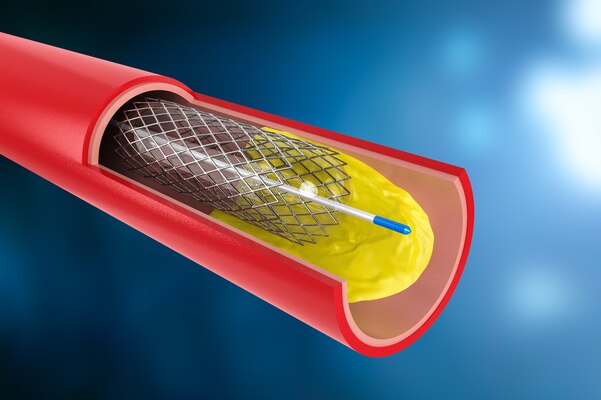Endovascular Surgery
Endovascular surgery is a type of vascular surgery that is performed with minimal invasiveness. Surgeons make small incisions and insert catheters to reach and treat damaged blood vessels. Through endovascular surgery, blood clots can be removed and blood flow can be improved. This surgical method is effective in reducing the chances of heart attack, stroke, and other critical medical conditions.

Qualifying for Endovascular Surgery
When you consider the differences between endovascular surgery and open surgery, you might question why open surgery is still utilized. However, the decision to perform one procedure over the other is influenced by specific factors relating to the patient and the procedure itself. It is not always possible to safely and efficiently execute all procedures using endovascular methods. This group includes:
- Areas that flex (knees and hips)
- The shape and location of the aneurysm
- The blockage may be too extensive
- Surgical repair performed through traditional open methods may have a longer duration, making it a preferable option for individuals who are younger.
- Individuals may have an aversion towards the constant monitoring that accompanies endovascular surgery throughout their lives.
Types of Endovascular Surgery
Endovascular procedures come in different types.
- Aneurysms or blockages in the aorta’s state or situation
- Cardiovascular disorders
- Peripheral vascular disease
- Carotid artery disease
- Critical limb ischemia
- Deep vein thrombosis (DVT)
- Pulmonary embolism
- Renal (kidney) vascular disease
- Stroke
- Varicose veins
- Genetic conditions that lead to different kinds of vascular disorders
- Leg pain due to poor circulation
What does endovascular surgery involve?
Endovascular surgery consists of creating a minor cut in the skin and inserting a tiny tube, known as a catheter, into a specific blood vessel.
Whenever a procedure called endovascular surgery is performed to address an aneurysm in the visceral arteries, a tiny incision is made at the inguinal level to introduce a catheter into the femoral artery. The catheter is then guided to the aneurysm where it utilizes a stent and embolisation agents to block the blood flow to the aneurysmal sac.
If someone has a stroke, a catheter can be put into the femoral artery and moved all the way to the brain. Once it gets to the clot, the catheter will release a stent to bring back regular blood flow. By taking out the stent, the clot will also be taken out.

Preparation
Prior to undergoing endovascular surgery, it will be necessary for you to have a consultation with your doctor. During this consultation, your doctor will review your medical history and perform a comprehensive physical examination. Additionally, you may be required to undergo certain tests to assess the condition of your heart, including a stress test and an electrocardiogram (ECG) which measures the electrical activity of your heart.
In order to assess if endovascular surgery is suitable for treating your aneurysm, various tests will be conducted, such as a CT scan and angiography. These tests enable your doctor to examine your aorta and blood vessels and help them choose the correct size graft.
In this period, your doctor will have a conversation about endovascular surgery with you, addressing any inquiries you might have.
What kinds of endovascular surgical procedures are carried out by healthcare providers?
The kind of endovascular procedure you undergo is based on your vascular condition and overall well-being. Possible procedures include:
- Balloon angioplasty and stenting involve using a small balloon on a catheter to widen or clear narrowed or obstructed arteries. This procedure is often accompanied by the placement of a stent, which is a small tube made of wire mesh, to ensure that the artery remains open.
- Stent grafting involves the use of a fabric tube with wire mesh to strengthen a weakened area in an artery known as an aneurysm. By being positioned in the affected spot, the stent graft enables blood to flow through it without exerting any pressure on the weakened section.
- Embolization involves the application of medications or artificial materials to restrict blood flow to a targeted region of the body. This method is utilized for the treatment of aneurysms, vascular malformations, as well as malignant or benign tumors.
- Repairing or replacing a damaged or defective heart valve involves either fixing the existing valve or substituting it with a synthetic alternative.

How long does it take to recover from endovascular surgery?
Recovery times after endovascular surgery differ based on the type of procedure performed. In some cases, you may be discharged from the hospital on the same day, which is known as outpatient surgery. However, if the procedure is more intricate or requires close observation, you might need to stay in the hospital for one or two days.
Benefits of Endovascular Surgery
One of the main benefits of endovascular surgery is the utilization of smaller cuts rather than a large incision on the chest. Additional advantages involve:
- Less scarring
- Fewer complications
- Quicker healing and quicker resumption of regular tasks
- Less discomfort
In emergency situations, we have the ability to fix various heart issues using an endovascular method. However, in certain situations, we may determine that a traditional, open method will provide you with the best results. Our main objective is always to ensure your overall health and achieve the most favorable outcome. Rest assured that regardless of the method chosen, our team possesses the necessary skills and resources to carry out a successful operation.
Treatment in Türkiye:
The medical staff of surgical teams, doctors, and consultants at REHABTÜRK can provide the best treatment options and free consultations, striving to stay up-to-date on the latest medical technologies and methods.
